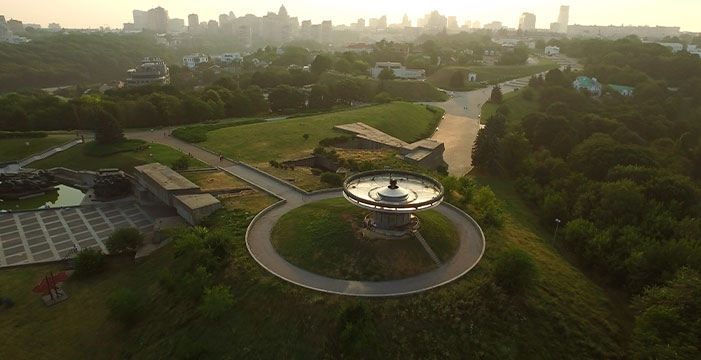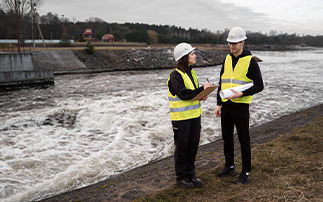Experts in Municipal Decarbonization and Energy Reduction Strategies

1. Assessment and Data Collection
The journey towards effective decarbonization begins with a thorough assessment of current energy usage and carbon emissions. ASI meticulously examines all aspects of municipal operations, facilities, and supply chains. This phase involves gathering crucial data on:
- Energy Consumption Patterns: Understanding how energy is used within various departments and facilities.
- Sources of Energy: Identifying where the energy comes from, whether it’s fossil fuels, electricity, or renewable sources.
- Emissions Profiles: Analyzing the overall emissions generated by different operations to pinpoint areas for improvement.
Establishing a clear baseline of energy use and emissions enables ASI to identify key areas for intervention and measure progress over time.
2. Stakeholder Engagement
Effective decarbonization requires the collective effort of all stakeholders involved. ASI prioritizes engaging with:
- Key Employees: Frontline staff often have valuable insights into operational inefficiencies and potential improvements.
- Management: Leadership must align with the goals and support the necessary changes within the organization.
- Community Members: Engaging the broader community helps ensure strategies reflect local needs and values.
This collaborative approach allows ASI to identify specific goals, recognize potential barriers, and uncover opportunities that may not be immediately apparent.
3. Setting Goals and Targets
With a solid understanding of current energy use and stakeholder input, ASI sets clear and measurable decarbonization and energy reduction goals. Goals might include:
- Specific Percentage Reductions: For example, targeting a 20% reduction in energy use by 2030.
- Long-term Emission Targets: Establishing commitments to achieve net-zero emissions by a designated year.
Defining these objectives provides municipalities with a roadmap that guides decision-making and prioritizes initiatives.
4. Identifying Solutions
The next step involves evaluating various strategies and technologies to enhance energy efficiency and facilitate the transition to renewable energy sources. ASI considers:
- Energy-efficient Upgrades: Improve lighting, heating, ventilation, and air conditioning systems.
- Renewable Energy Installations: Exploring options like solar panels or wind turbines to decrease reliance on fossil fuels.
- Alternative Fuels: Investigating biofuels or electric vehicles within municipal fleets.
This phase ensures that the identified solutions are not only effective but also align with the municipality’s goals and resources.
5. Implementation Planning
Once the strategies are determined, ASI develops a comprehensive implementation plan that details the steps necessary to achieve the identified goals. This plan includes:
- Timelines: Establishing realistic timelines for each phase of the project.
- Responsibilities: Clearly define who is responsible for what within the implementation process.
- Funding Requirements: Identify potential funding sources, such as government grants, public-private partnerships, or other financing options.
- Potential Partnerships: Collaborating with other organizations, experts, or local businesses to enhance the effectiveness of the strategies.
Carefully planning the implementation ensures that municipalities are well-prepared to move forward confidently.
6. Monitoring and Reporting
Tracking progress is crucial for maintaining momentum and accountability. ASI establishes a framework for ongoing monitoring and reporting, which involves:
- Regular Updates: Provide municipalities with periodic reports on energy use and emissions reductions.
- Adjustments: Utilizing data collected to refine strategies as necessary, ensuring municipalities stay on track to meet their goals.
This commitment to transparency fosters trust among stakeholders and encourages continuous improvement.
7. Education and Training
Creating a lasting impact involves emphasizing the importance of education and training. Promoting awareness and helping staff training on sustainability practices cultivate a culture of energy efficiency within the organization. Initiatives might include:
- Workshops and Seminars: Offering learning opportunities about energy conservation and sustainable practices.
- Resource Materials: Distributing guides and materials that support energy-saving behaviours in the workplace.
Investing in education empowers employees to contribute actively to the municipality’s sustainability goals.
8. Continuous Improvement
The process of decarbonization remains dynamic and requires adaptability. ASI designs its strategies to be flexible, allowing for continuous improvement based on:
- Ongoing Evaluations: Regular assessments of progress and challenges encountered.
- Technological Advancements: Integrating new technologies and practices as they emerge in energy efficiency and renewable energy.
This proactive approach ensures municipalities can evolve their strategies in line with changing circumstances and innovations.
Conclusion
At ASI, we believe that a sustainable future starts with action today. Our structured approach to municipal decarbonization and energy reduction empowers local governments, making them more resilient and environmentally friendly.
If you’re ready to take meaningful steps towards a greener future for your community, we’d love to hear from you! Reach out to us at info@AssetStrategyInc.com. Let’s make sustainability a reality together!
Watershed Assessment and Management Plans: A Comprehensive Guidet Management Plans?
A watershed is more than just a geographical feature. It represents a critical component of the hydrological cycle, where all the wate…
How Asset Strategy Develops Urban Forest Management Plans
Urban forests are vital to city ecosystems, offering numerous ecological, social, and economic benefits. They improve air quality, provide shade, enhance…
Levels of Service: A Strategic Approach for Municipal Infrastructure
Municipal infrastructure encompasses the essential public facilities and services provided by local governments to ensure the smooth functioning of communities. These include…


